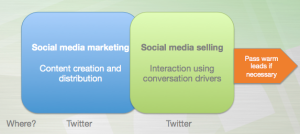
Running eCommerce ads is hard enough when you’ve got several campaigns, with dozens of ad variations in each, on just a single platform. Add another channel (or three) and you’ve got yourself quite a beast to wrangle!
While individual ad platforms provide optimization capabilities, they don’t provide the level of control that many digital marketers require. Inconsistencies across ad channels — plus the challenge of determining attribution — make it especially difficult to invest in ads with confidence your time and money are being well spent.
These inconsistencies create one of the biggest headaches we as eCommerce marketers face as we spend hours per day wrestling with spreadsheets and analytics — and that’s before we even scratch the surface of A/B testing, audience targeting, or creative and copy.
Recently, I reached out to a handful of eCommerce experts to get their take on the challenges and strategies they’ve found helpful in optimizing multi-channel eCommerce campaigns.
Here’s what they said:
1. Use UTM tags
While it may seem incredibly obvious, you’d be surprised how often UTM tags are underused.
“Not utilizing UTM tags makes it very hard to understand what medium is referring traffic to your site, which affects the clarity of understanding which medium you need to focus on and scale,” says Mina Elias, Founder and CEO of eCommerce site MMA Nutrition. His tried and true recommendation to use UTM tags systematically to test “one variable at a time” will become all the more important for understanding where your quality traffic is coming from as Pixel data is lost and cookies become a thing of the past.
2. Develop a 360-degree omnichannel strategy
Your customers spend over 6 hours a day online: searching, on social media, or reading content.
To really engage with your base and figure out how best to reach them, you need to “understand the full customer journey from the customer’s point of view, instead of the inside-out “channel’ view,” notes Alex Genov, Head of Customer Research at Zappos.
“It is therefore essential for companies to consider all platforms and channels when creating their marketing plan including online, in-store, across mobile, and social,” notes Alice Chang, Founder and CEO of Perfect Corp.” Don’t forget to look into some of the alternative platforms to Facebook and Google. “There is a lot of underpriced ad real estate on platforms that aren’t utilized as often, such as Bing, Reddit, TikTok,” recommends Anthony Lee, Amazon Subject Matter Expert at Canopy Management. “Find an off-the-beaten-path platform and start running ads to your Amazon listings.”
3. Don’t overextend yourself across too many channels
On the surface, an omnichannel strategy sounds like the right approach, but it could easily backfire. You’re never going to be on every proverbial park bench, so you do need to prioritize. Avoid the temptation of jumping on the next new “shiny” object, just because it sounds exciting.
“Go where your customers are. Just because an ad platform like TikTok is hot and trending right now, does not mean your brand needs to be there,” says Duane Brown, CEO & Head of Strategy at Take Some Risk, Inc. “Your brand should spend time on channels you can own, be profitable at, and also serve your customer base.”
While you want to be where your audience is, you need to grow incrementally. “Start on one channel and then expand to others. Don’t try to scale 3 channels at the same time,” Kevin Indig, Director of SEO at Shopify, pointed out. Even if your customers are on a particular channel, don’t start trying to have a presence there if you can’t commit the time and resources to build it out properly.
4. Leverage cross-channel optimization tools
While many marketers are still struggling with spreadsheets and 20 open tabs at a time, there are solutions out there that can help with optimization. “Use tools that aggregate your data so you can analyze it, ask the right questions, and adapt your strategy,” Stefan Chiriacescu, Founder & CEO of eCommerce Today, suggests. “Long gone are the days in which you’d manage channels separately.”
“Analyzing performance data on a 100% like-for-like basis across different ad platforms is next to impossible for us today,” notes Brendan Hughes, CEO of Optily. “This is why platforms such as Optily have doubled-down on offering algorithmic analysis and predictive modeling to identify investment opportunities. This type of solution saves marketers significant time analyzing, interpreting, and implementing changes based on complex data points across multiple platforms.”
Want more cross-channel ad optimization tips?
Brendan Hughes recently published Accelerate eCommerce Growth, which is a practical guide for eCommerce marketing. It goes into the most effective ad framework, the difficulties of measurement and attribution, and tech solutions that help save time and money. The paperback and Kindle versions are available on Amazon or you can download a free copy here.
Digital & Social Articles on Business 2 Community
(61)
Report Post





